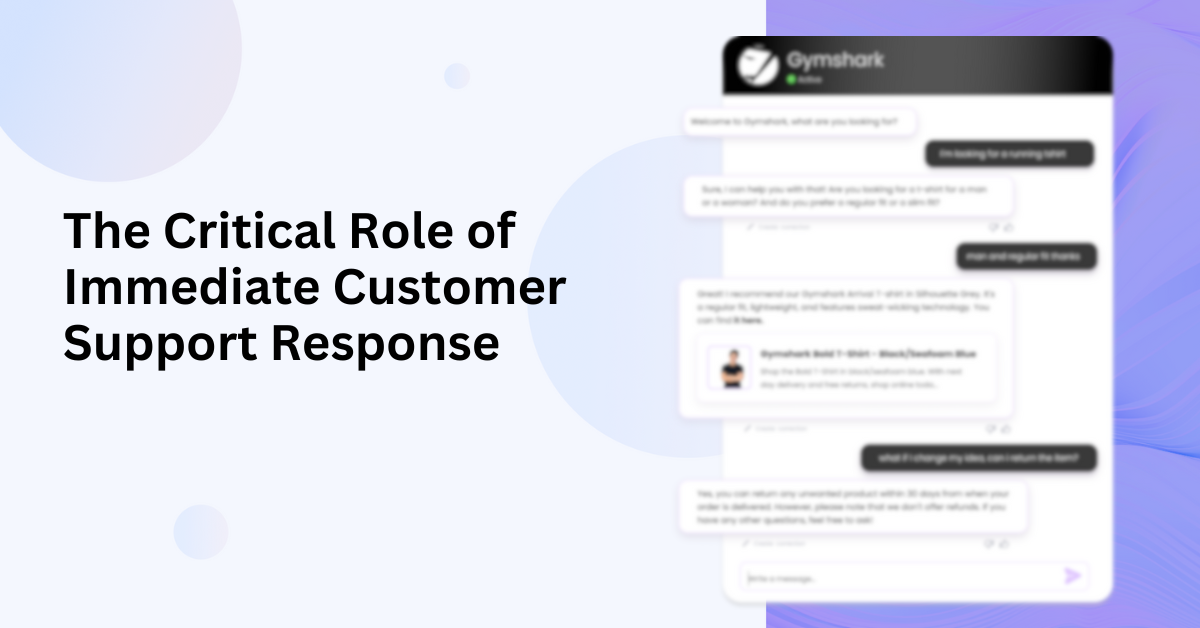The digital marketplace is witnessing a remarkable transformation, especially in e-commerce. In this dynamic environment, the significance of providing prompt responses to customer inquiries is paramount. This is not just a trend but a customer expectation, as highlighted by Forrester analyst Kate Leggett.
Her research reveals a stark reality: 53% of US online adults will abandon their carts if they don’t get quick answers, while 73% value their time being respected by online services.
The evolution of customer service in the e-commerce sector has been rapid since Forrester’s 2016 study. Initially, the focus was on integrating digital channels and self-service options to enhance customer experiences. But as we forge ahead into 2024, the strategies have evolved, embracing new technological advancements and shifting customer preferences.
Embracing Digital and Autonomous Service Methods
In today’s rapidly evolving landscape, organizations are increasingly undertaking a transformative journey to embrace digital and autonomous service methods. This shift is driven by the need to enhance efficiency, customer satisfaction, and overall operational effectiveness.
The customer service domain has seen a notable pivot towards digital and self-service channels. From 2012 to 2015, the use of online FAQs and help sections on business websites by US online adults surged from 67% to 81%. This indicates a clear preference for quick, accessible solutions.
Moreover, the rise of web chats as a preferred customer service channel is significant. Its immediacy and user-friendly nature make it a popular choice over traditional, often time-consuming and high friction voice calls. This shift is indicative of a broader trend towards digital mediums for straightforward queries, reserving voice calls for more complex issues.
Digital Service Methods
Digital service methods involve leveraging technology to streamline and optimize various aspects of service delivery. This includes the use of mobile apps, cloud-based platforms, AI, and data analytics. These tools enable organizations to create seamless and personalized customer experiences, automate routine tasks, and gain valuable insights into customer preferences and behavior.
Autonomous Service Methods
Taking the concept further, autonomous service methods deploy systems that can operate with minimal human intervention. This involves the integration of AI, machine learning, and robotic process automation. Autonomous systems handle repetitive tasks, make data-driven decisions, and continuously improve their performance through self-learning mechanisms, resulting in increased operational efficiency and reduced errors. You can check Chat GPT for business cost on our partner’s Zipchat website.
Real-Time and Personalized Services
The combination of digital and autonomous methods enables organizations to provide real-time and personalized services. Digital channels facilitate engagement across various touchpoints, offering convenience and accessibility. Autonomous systems, powered by advanced algorithms, analyze vast amounts of data to predict customer needs, personalize recommendations, and deliver targeted solutions.
Agility and Responsiveness
Digital and autonomous technologies contribute to a more agile and responsive organizational structure. Digital tools facilitate remote collaboration and flexible working, while autonomous systems enhance decision-making speed and accuracy. This dynamic ecosystem allows organizations to adapt quickly to changing market conditions and customer expectations.
Challenges and Considerations
However, the adoption of these methods presents challenges, including concerns about data security, ethical considerations related to AI, and the need for upskilling the workforce. Organizations must navigate these challenges thoughtfully, implementing robust governance frameworks and prioritizing transparency and accountability.
Strategic Imperative
In conclusion, embracing digital and autonomous service methods is a strategic imperative for organizations aiming to thrive in the digital age. By harnessing the power of technology to enhance customer experiences, streamline operations, and foster innovation, businesses can position themselves for sustained success in an ever-evolving and competitive landscape.
AI’s Breakthrough in Online Retail
The digital realm is rapidly transforming, and Artificial Intelligence (AI) has emerged as a key innovator in customer interaction, especially with platforms like Zipchat.ai . AI’s integration into e-commerce is altering the traditional business-customer dynamic with numerous benefits:
- Constant Access: AI chatbots break the constraints of traditional working hours, offering 24/7 support. This non-stop accessibility greatly enhances user experience, providing immediate assistance whenever needed.
- Comprehensive Information Repository: AI’s ability to store and process extensive data surpasses human capabilities. This allows for more precise and thorough product and service information, often outstripping what a human agent can recall.
- Intelligent Adaptation: Through interaction analysis, AI chatbots continuously refine their understanding of customer preferences, leading to improved sales conversions.
- In-depth Product Insight: AI systems skillfully dissect a store’s product range and details, providing depth of knowledge that can be hard for human agents to match.
- Operational Efficiency: Capable of managing several customer inquiries at once, AI chatbots outpace human customer service in response time, thereby streamlining problem-solving and reducing customer waiting periods.
- Economical Solution: Over time, AI platforms prove to be more cost-effective than maintaining human-operated customer service teams.
- Authentic Conversations: Despite their digital nature, advanced AI chatbots like Zipchat.ai engage customers with surprisingly genuine and empathetic communication, improving the overall service experience.
Notably, Zipchat.ai has made remarkable strides, particularly with Shopify Plus merchants. It has recorded impressive sales conversion rates, with an average of 12.4% chat-to-sale conversion, peaking at 31% for top clients.
Beyond Shopify, Zipchat.ai’s flexibility makes it suitable for a variety of online businesses, including pharmaceuticals, fashion outlets, and various marketplaces. Its ability to adapt to different sectors highlights its potential to fulfill varied customer service requirements in the modern era.
To sum up, as e-commerce businesses evolve to keep pace with customer service trends, emphasizing efficiency and speed is vital. Integrating AI technology is key to not only keeping up with but also surpassing customer expectations in today’s ever-changing online market.





 Community
Community
